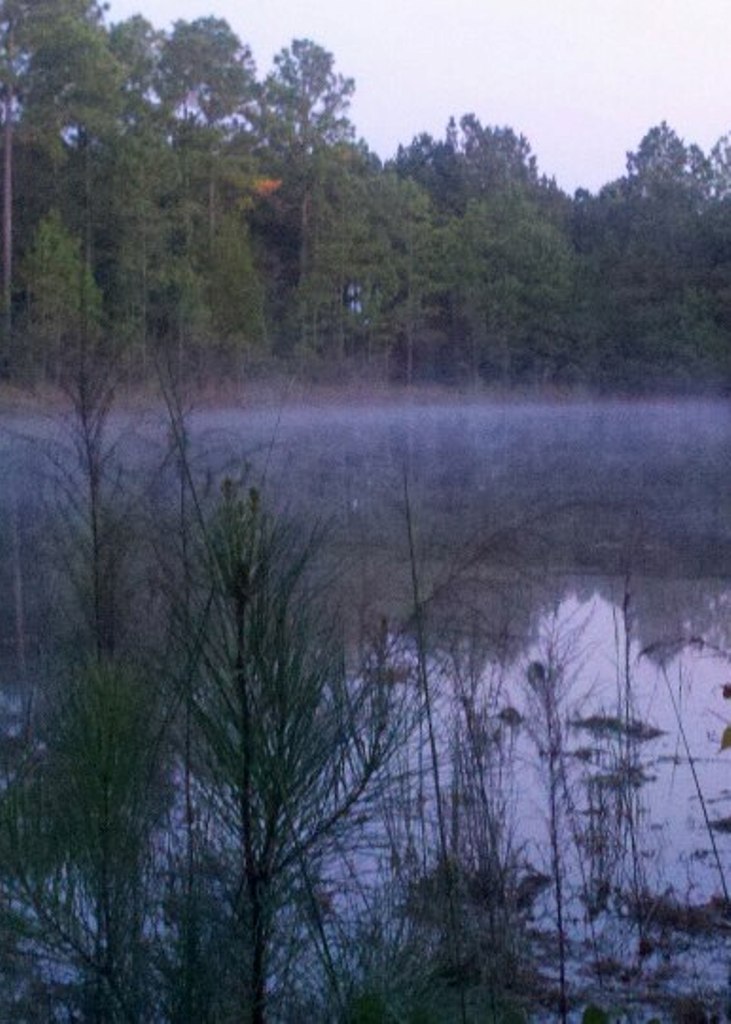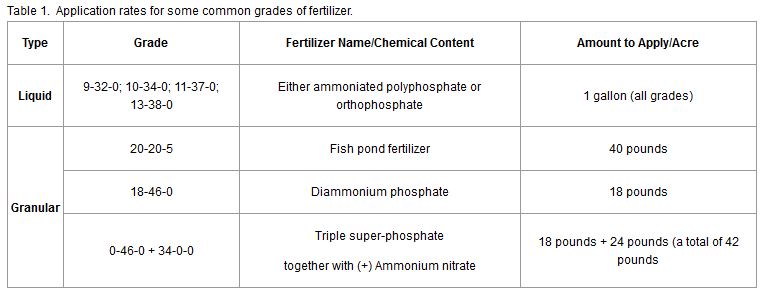Recreational farm ponds vary in size and purpose and management goals differ widely from owner to owner. Some pond owners want clear water with only small amounts of vegetation and a few fish to catch. This pond is meant mainly for relaxation and aesthetics. Other pond owners want to fish more often, but also want to enjoy the wildlife that are attracted to the pond. Still others want to intensely manage their ponds for great fishing whether it’s trophy bass, trophy bluegill, or just a good balance of the two. Additionally, many ponds are used as a source of irrigation on the farm.
As you can imagine, each goal has very different management practices associated with it. When a pond owner asks about a management practice like fertilization, my first question in return to them is, “What is your goal for the pond?”
For ponds managed mainly for aesthetics with occasional fishing, I do not recommend fertilizing as a management tool. Fertilizing a pond is essentially like adding plant food. The fertilizer feeds aquatic plants (the base of the food chain), which in turn feeds more microscopic zooplankton, which in turn feeds small fish, and so on up the food chain to feed large predatory fish. Just like fertilizing vegetable gardens to produce more food, fertilizing a pond ultimately produces more fish. Just keep in mind that the practice of fish feeding is also adding nutrients to the pond.
By adding fertilizer and producing more aquatic plants and fish, you are also increasing the demand and use of dissolved oxygen. Proper aeration of the pond becomes very important to avoid fish kills. When nutrients are added into a pond, it helps to remove them in the form of fish to keep the pond balanced. Fertilization increases the number of microscopic algae plants that are suspended in the water. This gives the pond a green color and can shade out rooted plants in the deeper portions of the pond.
As you can see, fertilizing your pond will also alter the characteristics of your pond. Because of this, I only recommend beginning a fertilization program if the pond owner is willing and able to commit to continuing the fertilization program, and if the objectives for the pond include the desire and the ability to manage increasing fish populations with heavy fishing pressure and other pond management tools. Important water quality conditions such as temperature (greater than 65°F), dissolved oxygen levels, the right pH, and the right alkalinity also need to be considered, managed, and monitored before, during, and after application of a pond fertilizer.
Before beginning this practice, you should read the UF/IFAS publication:
Fertilization of Fresh Water Fish Ponds
- Field Days are for Education– Recap of the WFREC 2025 Corn & Soybean Field Day - July 25, 2025
- Spray Drone Regulations - July 16, 2024
- 2023 WFREC Crop Variety Trial Results - February 2, 2024


